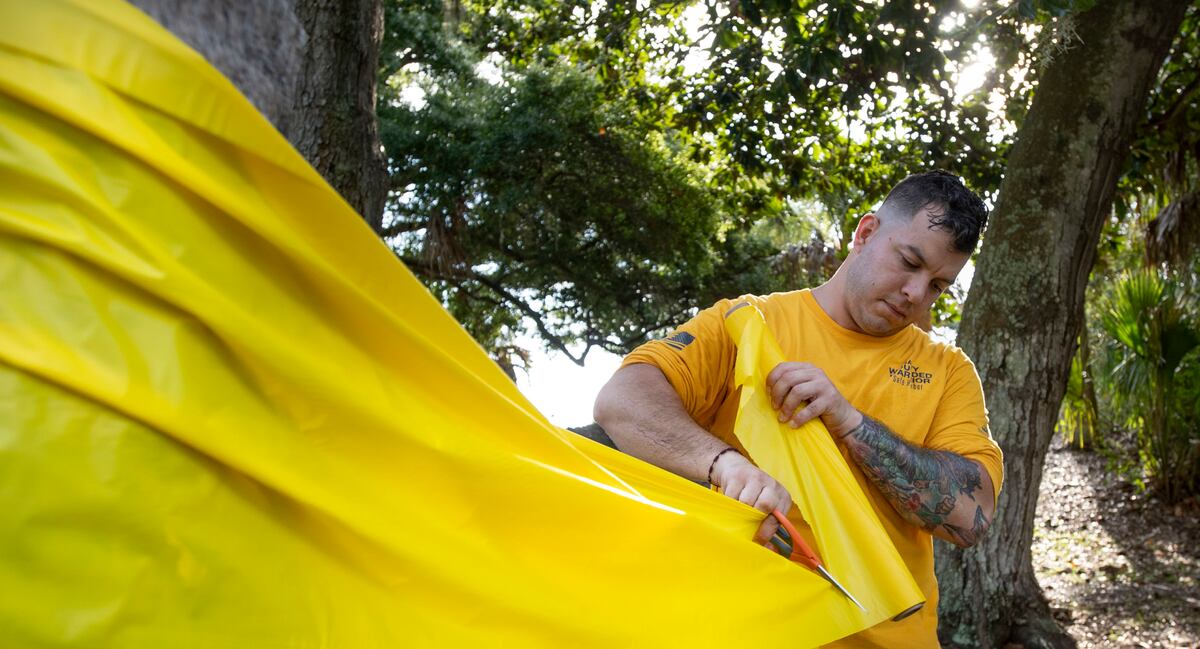As the United States grapples with a shortage of mental health providers in a time of increased need, the Navy is also struggling to fill such positions for the fleet, according to data provided by the Navy Bureau of Medicine and Surgery.
But while BUMED officials provided basic numbers to Navy Times last month, they did not respond to a request for an interview with leadership for a deeper look at the challenge of filling the shortages and the long wait times sailors are reporting when they seek the mental health help that leadership encourages them to get.
As of last month, the Navy had not filled 132 of 455 budgeted jobs for licensed civilian and contractor mental health providers, according to BUMED spokesman Ed Gulick.
Gulick said those numbers don’t reflect the Defense Health Agency-funded providers to which sailors can be referred, but that BUMED is looking to fortify its own shortfalls via “recruiting, retention initiatives and position classification updates.”
RELATED

On the active-duty side, the Navy is short 10 members for its 467 authorized billets for psychiatrists, clinical psychologists, license clinical social workers and mental health nurse practitioners, according to Gulick.
Those positions are based at military hospitals and clinics, and also embed with deployed units.
“In light of a national shortage of mental health providers, Navy Medicine continues to maximize direct accessions, graduate education, re-designation, and special pays to improve manning and retention,” Gulick said.
Gulick did not respond to follow-up emails seeking further information.
A shortage of Navy mental health providers and long wait times was made personal by Master Chief Petty Officer of the Navy Russell Smith during his leaked all-hands call with the crew of the aircraft carrier George Washington in April.
Smith spoke frankly about being told last year that he would have to wait six weeks to see a Navy provider, a queue he avoided by seeking private care “because I can afford to,” and how the nation in general is suffering from a shortage of mental health providers.
A March article in the Psychiatric Times publication echoes that point, noting that while more adults in the United States are reporting anxiety and depression symptoms since 2020, the supply of providers has been lagging for years.
In 2013, it was estimated that the country would be short more than 6,000 psychiatrists by 2025. That estimate has now reached 7,500, according to the report.
“There’s just not a lot out there,” Smith said of much-needed psychiatrists.
A November 2020 poll by the American Psychological Association found that three-quarters of respondents reported seeing more patients with anxiety disorders compared to before the pandemic, while 60 percent of those surveyed said they were seeing more patients with depressive disorders.
Nearly a third said they were seeing more patients overall.
Despite the need, Smith noted in April that the Navy can’t mass produce specialists for these vital positions.
“You can’t just snap your fingers and grow a psychiatrist,” Smith said. “That takes years, decades of school and training and practice and internship and everything else that gets you to that point.”
Smith also suggested that some newly minted psychiatrists may not see the Navy as their best career option.
“When you’re really in debt and you owe a lot, because that’s what it took to become a psychiatrist…the kind of debt you have doesn’t lend itself necessarily to come to the Navy,” he said. “Would you like to make that money and pay back your student loans in about five to 10 years? Or would you like to owe on that for the rest of your life and maybe…come into the Navy as a lieutenant?”
Defense officials will start a pilot program this fall to test a behavioral health staffing model that matches “supply with demand,” Seileen Mullen, acting assistant secretary of defense for health affairs, told lawmakers during a May 25 hearing.
“We will also significantly increase our telebehavioral health, including 63,500 visits this year,” she said before the House Appropriations defense subcommittee. “We’re also trying to lower the referral and approval Tricare barriers. While there are shortages in certain areas, we are tackling them, and we understand that this will not be an easy or a quick fix.”
Navy Surgeon General Rear Adm. Bruce Gillingham told lawmakers that the sea service prioritizes mental health support at the deck plates, with embedded mental health providers.
Some 36% of active-duty mental health providers and 30% of behavioral health technicians are assigned to those billets.
These providers are embedded on ships and subs, with Marine Corps units and training commands, according to a copy of his written testimony before the May 25 House hearing.
The Navy has seen significant increases in the use of virtual services for mental health as well as primary care, he stated. In fiscal 2021, almost 20% of mental health appointments for sailors and Marines were conducted virtually.
Gillingham noted that the Navy, like the other services, also focuses on prevention.
“Beginning in boot camp, all of our recruits are taught stress reduction and meditation techniques,” he told lawmakers. The service is also teaching leaders about identifying those at risk “so we can get them to care.”
Geoff is the managing editor of Military Times, but he still loves writing stories. He covered Iraq and Afghanistan extensively and was a reporter at the Chicago Tribune. He welcomes any and all kinds of tips at geoffz@militarytimes.com.









